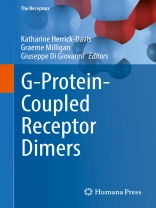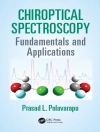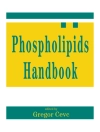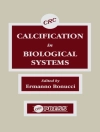G-protein-coupled receptors (GPCRs) are believed to be the largest family of membrane proteins involved in signal transduction and cellular responses. They dimerize (form a pair of macromolecules) with a wide variety of other receptors. The proposed book will provide a comprehensive overview of GPCR dimers, starting with a historical perspective and including, basic information about the different dimers, how they synthesize, their signaling properties, and the many diverse physiological processes in which they are involved. In addition to presenting information about healthy GPCR dimer activity, the book will also include a section on their pathology and therapeutic potentials.
Cuprins
Part I. Introduction.- 1. From Monomers to Dimers and Beyond: An Exciting Journey in the World of the G protein-coupled Receptor Family.- 2. The use of Spatial Intensity Distribution Analysis to Examine G protein-coupled Receptor Oligomerization.- 3. Advanced Microscopy Techniques for Studying G protein-coupled Receptors.- Part II. Receptors.- 4. Light Sensing G protein-coupled Receptor Rhodopsin Dimer.- 5. Extreme Vetting of Dopamine Receptor Oligomerization.- 6. Serotonin receptors.- 7. Cannabinoid and Opioid Receptor Heteromers.- 8. Di/oligomerization of Glycoprotein Hormone Receptors.- 9. Chemokine Receptor Oligomerization to Tweak Chemotactic Responses.- 10. Secretin Receptor Dimerization. Prototypic of Class B GPCR Behavior.- 11. Receptors and RAMPs.- 12. Obligatory Heterodimerization of GABAB Receptor.- 13. Metabotropic Glutamate Receptors. Part III. Assembly and Trafficking.- 14. The monomer/homodimer Equilibrium of G protein-coupled Receptors: Formation in the Secretory Pathway and Potential Functional Significance.- 15. Probing Self-assembly of G protein-coupled Receptor Oligomers in Membranes using Molecular Dynamics Modeling and Experimental Approaches.- 16. Interaction of Membrane Cholesterol with GPCRs: Implications in Receptor Oligomerization.- Part IV. Physiology and Therapeutic Potential.- 17. Allosterism within GPCR Oligomers: Back to Symmetry.- 18. Understanding the Physiological Significance of GPCR Dimers and Oligomers.- 19. Heteromers form Novel Signaling Complexes.- 20. Heteroreceptor Complexes Implicated in Parkinson’s Disease.
Despre autor
Katharine Herrick-Davis is Professor of Neuroscience and Experimental Therapeutics at Albany Medical College, Albany, USA. Her research has focused on investigating receptor dimerization and how it affects receptor function using the 5-HT2C receptor as a model system.
Graeme Milligan is Professor of Molecular Pharmacology, University of Glasgow, U.K. he is the Dean of Research, College of Medical, Veterinary and Life Sciences, University of Glasgow. His main research group centres on the function, structure and regulation of GPCRs and their interacting proteins.
Giuseppe Di Giovanni is Professor of Human Physiology, University of Malta, Malta. He is the President of the Malta Neuroscience Network and Treasurer of the Mediterranean Neuroscience Society. His research has focused on the pathophysiology of the monoaminergic systems in different neuropsychiatric disorders, such as Parkinson’s disease, depression, drug of abuse and epilepsy.












